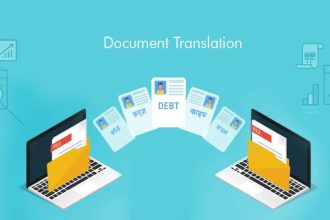Web scraping is like a coin with data extraction representing the front and data parsing the back. During any web scraping process, one goes in to extract data and comes out by parsing the extracted data.
For any business to truly enjoy the full benefit of web scraping, both processes must be effectively carried out, and companies are generally advised not only to focus on the extraction process but the parsing process as well.
Today, we will consider what is parsing of data and how it works and whether or not you should build your parser or buy one.
What is data parsing?
Data parsing is defined as the technique used in converting extracted data into a readable and more acceptable format. It generally involves taking raw data in its HTML state and transforming it into easier-to-understand formats such as a CSV, a JSON file, or a table.
Also Read: 8 Proven Tips for Building the Perfect Website
This is important because HTML files are complex and complicated to read or interpret, and converting them into those readable formats is generally the only way data can be put into any meaningful use.
What is data parsing used for?
The process of data parsing is solely for data conversion; however, its applications vary. The following are some of the activities data parsings can be used for:
- Web scraping
The process of scraping the internet for an enormous amount of data begins with data extraction and ends with data parsing. Data parsing is an intelligent way to convert the scraped unstructured data into a readable format with form and structure. This application of data parsing is important if web scraping must be of any use.
- Competitive analysis
Data parsing can be efficiently combined with web scraping for a robust data analysis process. The method involves collecting data and then turning it into a format that can be easily analyzed. This application is preferred mainly because it saves time and energy for several business activities such as market analysis and forecast, business (mostly start-ups) evaluation, and equity research.
- Optimizing workflow
Data parsing also plays a very critical role in allowing for a smooth workflow. When organizations use a data parser, it is mostly because they want to render unreadable data into a readable file which, invariably, fastens how quickly that data can be used and deployed, thereby improving workflow and increasing productivity.
How does data parsing work?
Generally speaking, data parsing works in two separate layers. However, not all parsers work this way – separating the layers – as some parsers known as scannerless parsers can fuse both layers to work as a single process.
And while the process through which a data parser works is mostly technical, it can still be explained in the steps as described below:
The Lexer Layer
- The lexer, also sometimes called a tokenizer or scanner is usually the first step towards parsing data
- The scanner scans the input in the extracted data and produces matching tokens for each input
The Parser Layer
- Once the tokens have been produced, the proper parser scans the tokens next and returns them in a structured format
The Scannerless Parsers
This type of parser reads the text directly (instead of reading individual tokens) and therefore does not need a lexer. The parser recognizes the input, whether as grammar or binary, and goes ahead to produce a structured output.
Building a parser vs. buying a parser: pros and cons
Understanding what is parsing is one thing, and knowing whether you need to build your own or buy one is another. Both ways work just fine and have their advantages and disadvantages. We will now look at each to help you choose the most effective option.
Building a parser
Building a parser for your organization is not an easy task. However, some businesses say it is worth the effort.
Pros:
Below are some advantages of building your parser:
- You can customize it to meet your company’s specific needs
- It is considered to be less expensive
- The tool is well under your control, including maintenance and updates
Cons:
The disadvantages of building your parser are as follows:
- With the ability to easily customize your parser comes the responsibility of also building a corresponding server fast enough to match your parser’s speed
- Software control is entirely in your hands which also means you will spend more time planning, building, and testing, which could reflect negatively on the company’s performance and revenue
- Building your parser also requires that you hire all the engineers that will work on the project and house them properly. This can be strenuous for any business as it requires physical space and other resources
- Constant maintenance and software update can easily translate into more cost and additional expenses
Buying a parser
An alternative to building a parser is to buy one that has been already built and tested.
Pros:
The following are some of the reasons why it is more beneficial to buy a parser:
- You will not need to hire an entire team to build the tool or sacrifice physical space and other resources for the production process
- You will be saving you and your business valuable time and energy, which can be focused on other areas to grow the company
- Maintenance and routine updates are generally handled by the firm from whom you are buying the tool. Also, many of these companies are known for providing reliable customer support to resolve any issues you may have quickly
Cons:
The downsides of buying a fully-ready parser include:
- You will lack full control over the software
- Buying a parser could be more expensive than building one yourself
Conclusion
Data parsing entails the process of turning complex and unreadable data into a format that can be easily understood, interpreted, and analyzed. Yet deciding whether to build or buy a parser is not such an easy decision.
However, if you place their pros and cons side by side, it would be easier to see which of the two options is more efficient and most profitable. If you want to dig deeper into the topic, click here and read another article on data parsing.















